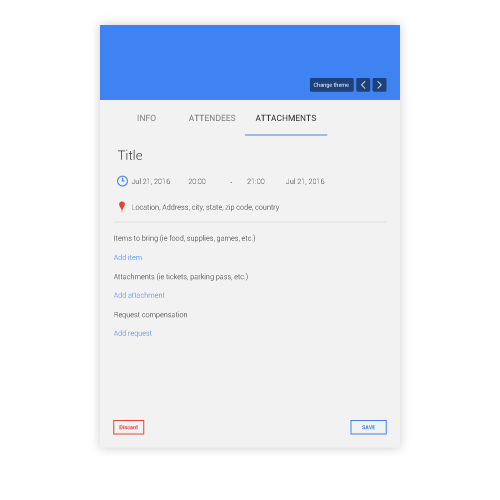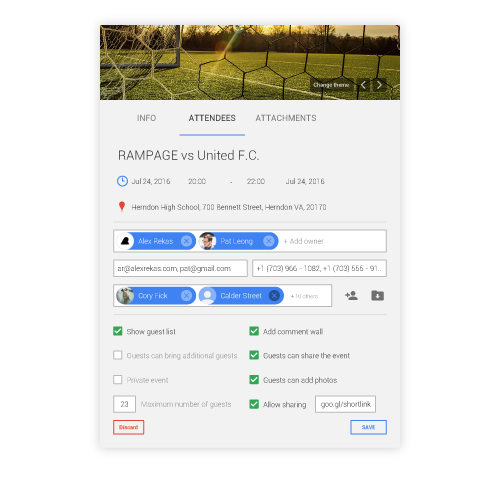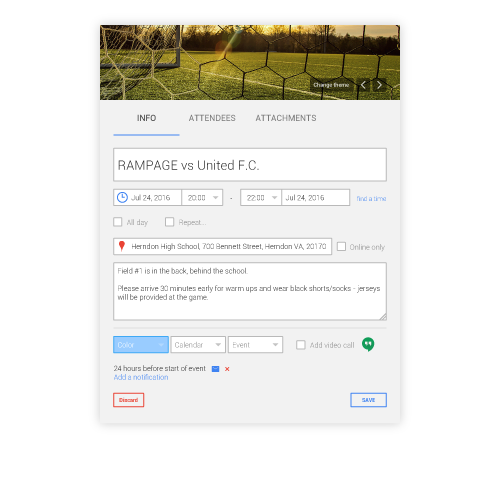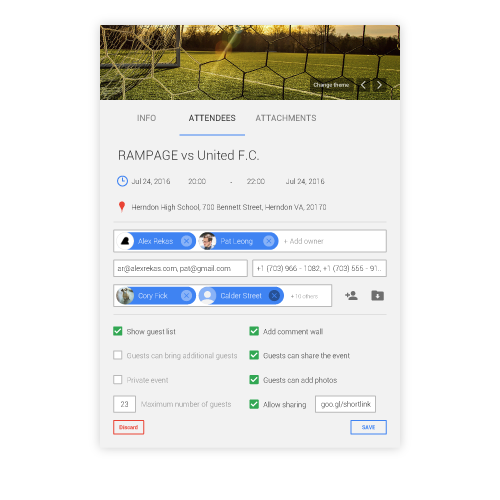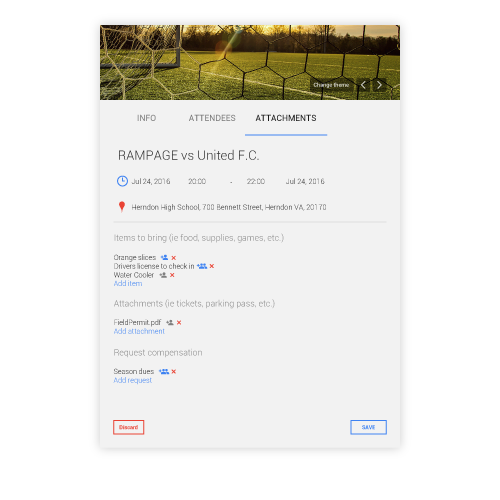Google Invite
CHALLENGE
Create an event scheduling feature in Google Calendar that feels more analogous with other Google services, while giving new features that would enhance the scheduling for creators and attendees. Rethinking calendar scheduling within the Google ecosystem is going to bring about many design challenges due to the influx of new features and keeping it within Google’s Material Design guidelines.
SOLUTION
Features and ideas were gathered from comparing similar products currently offered such as eVite, paperless post, facebook, current Google Calendar, and previously, Google+ (RIP).
After desired features had been identified, they were organized according to Material Design standards – which Google graciously provides as a free resource when building products for their ecosystem.
UX Research

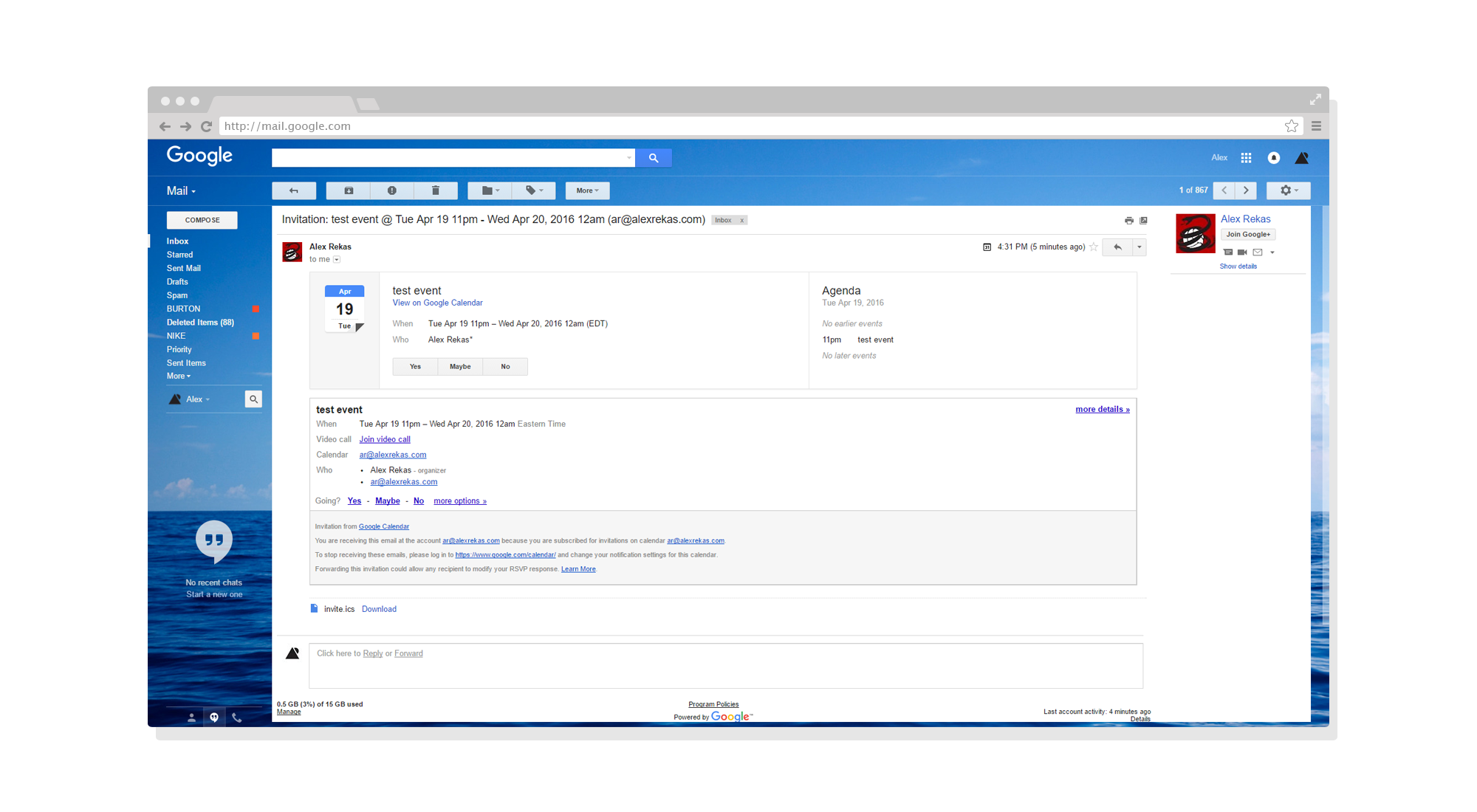
Google Calendar Today
Google Calendar in itself is a great tool that’s very useful, but there’s an untapped opportunity to grow the product. Currently, creating and receiving an event is still very rudimentary with almost a Craigslist feel, it gets the job done with little to no design, relying heavily on basic text. Keeping it text-heavy and withholding a design refresh, limits it’s ability by creating a cluttered interface that makes it difficult to use.
Similar Products
- Evite
- Paperless Post
- punchbowl
- pingg
- anyvite
- Facebook events
- Eventbrite
- SignUpGenius
Proposed Updates
- Place additional options in another tab
- Uploading attachments to the event such as a field permit or event tickets
- Integrate Google’s Material design language, bringing look & feel up to date with other Google applications
- Deeper integration with your contacts, giving a better visual understanding of who’s part of the event
- Ability to import contact lists
- Have Google Maps add location images to increase visual comprehension of actual location or venue
- Creating and saving event templates
- Integrate Google Wallet and add the ability to request compensation for the event
- Assigning tasks to complete before the event or items to bring to the event
- Using icons within input fields to help users quickly identify important fields
- Ability to comment on the event or upload photos
Visual Changes
Proposed Updates When Creating an Event
- Keep most important information in the main tab, but allow users to add important details in the additional tabs
- Using icons within input fields to help users quickly identify important fields
- Uploading attachments to the event such as a field permit or event tickets
- Connecting with your Google contacts brings user photos to the invite, giving it a more personal feel
- Integrate Google Wallet and add the ability to request compensation for the event if needed
- Assigning tasks to complete before the event or items to bring to the event
Proposed Updates When Editing an Event
- Allowing multiple owners of an event, allowing other organizers to help manage the event
- Ability to import contact lists, this can be especially helpful with multiple event organizers
- Creating and saving event templates for future or repeated use
- Updating tasks to complete before the event or items to bring to the event
Proposed Updates When Receiving an Event
- Updated look and feel using Google’s Material design language, bringing it up to date with other Google applications
- Deeper integration with your contacts, giving a better visual understanding of who’s part of the event
- Google Maps adding location images to increase visual comprehension of actual location or venue
- Google Wallet integration, adding the ability to transfer compensation to the event owners
- Alerts on tasks or items to bring to prepare for the event
Conclusions
This was all an exercise to build something better than eVite, which can’t be THAT hard, but nobody seems to want to do it. While it probably doesn’t align into Google’s business strategy, relevant ads on the page for “things to bring” could be helpful, but most importantly, they can collect data about the types of events we like attending.



